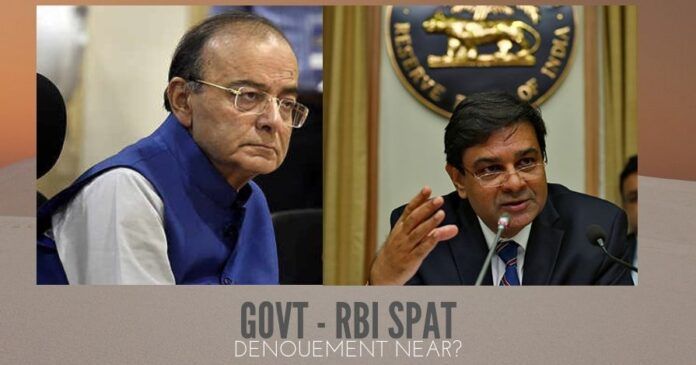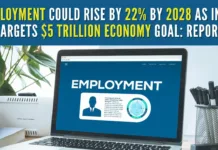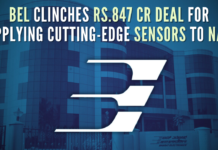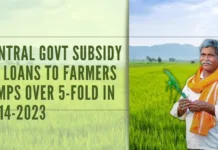
The spat must be bridged or remain limited and not blow up further.
The rift between the Central Government and the RBI grew after the RBI Deputy
Governor Viral Acharya said in a speech on October 26, 2018 that undermining a
central bank’s independence could be “potentially catastrophic”, an indication that
the regulator is pushing back hard against government pressure to relax its policies
and reduce its powers.
The government believes that easing lending restrictions for the 11 banks under the
(PCA) framework could help reduce pressure on (MSMEs)
Acharya also said that, “Governments that do not respect central bank independence
will sooner or later incur the wrath of financial markets, ignite economic fire, and
come to rue the day they undermined an important regulatory institution…”
Now comes to the fore, the question of the government’s invoking never-before-used
powers in Section 7 of the Reserve Bank of India (RBI) Act, 1934, allowing it to issue
directions to the RBI Governor on matters of public interest such as liquidity for
NBFCs, capital requirement for weak banks and lending to SMEs. Albeit, the
government has only initiated consultations with RBI on different issues under
Section 7 (1) and not invoked it.
- The Section 7 of the RBI Act empowers the Central Government to consult and
give instructions to the Governor of the Reserve Bank of India (RBI) to act on
certain issues, that the government considers serious and in public interest. - The Central Government may give such directions to the Bank from time to time,
after consultation with the Governor of the Bank, considered necessary in the
public interest. - Once the Section 7 is invoked, the general superintendence and direction of the
affairs and business of the Bank is entrusted to a Central Board of Directors which
may exercise all powers and do all acts exercised or done by the Bank. - It is considered that such a move could be a last resort for the Government to
increase liquidity, ease pressure on banks and businesses, and boost economic
growth.
The talks of invoking Section 7 began for the first time during the matter related to
power generation which was taken up by the Allahabad High Court in which a case
was filed by power producers challenging the RBI’s February 12 circular. The High Court at that time ruled that invoking of the section could be considered. However,
the government at that point did not invoke the section.
The Government and RBI have been crossing swords over the following issues for
sometime now.
In February, the economic survey presented ahead of the budget had suggested that
the RBI share the burden of recapitalising banks.
NPA crisis.
The government believes that easing lending restrictions for the 11 banks under the
Prompt Corrective Action (PCA) framework could help reduce pressure on Micro,
Small and Medium Enterprises (MSMEs).
However, the apex bank differs a bit, contradicting that such a move would undo
clean-up efforts against Non-performing assets (NPAs). Currently, 11 out of 21 PSU
banks are under the scanner. Dena Bank and Allahabad Bank are even facing
restrictions on expansion of business.
Nirav Modi-PNB Scam
Businessmen Nirav Modi and Mehul Choksi are accused in a scam involving their
deals with several banks including the PNB fraud of nearly Rs 14000 crore. FM has
held RBI responsible for laxity in monitoring such credit process of public sector
banks.
NBFCs issue
For the past few days, the Non-Banking Finance Companies (NBFCs) have been
pressing the government for more liquidity. But RBI was resolute in maintaining its
position against it.
Dividend issue
In February, the economic survey presented ahead of the budget had suggested that
the RBI share the burden of recapitalising banks.
MSME’s need much more than mere bank credit
The government will insist, through its nominees, that a resolution be passed by the
board of the Reserve Bank of India (RBI) on issues it has raised and a firm decision
be reached at a meeting on November 19, said people with knowledge of the matter.
The government does not want these matters to be brushed aside by being referred
to a committee as has been the case of late, they said.
In the mean-time, the government has come out with a scheme for Launching of 59-
minute in principle loan of up to Rs. 1 crore approval for small and medium enterprises. While the scheme looks attractive from the point of view of SMEs, it
needs to be reviewed from the following considerations.
MSME’s need much more than mere bank credit, eg: basic infrastructure, labour law
reforms, raw-material availability, easy quick settlement of their supply bills
(especially from the Govt purchasers). These are just some of the handicaps they
face and therefore form the set of parameters, inter alia, that must be vetted in credit
appraisal. Govt. is addressing many of these issues, but, a 59-minute time-frame is
insufficient to conduct even a preliminary scrutiny of the documents submitted and a
credit-appraisal in line with banking norms/prudence; even an effective KYC cannot
be completed within this sort of a time-frame.
So, are not the basic credit appraisal norms being watered down here? Is RBI
expected to stay silent on this move especially when fixing credit appraisal norms is
the sole prerogative of RBI?
Govt. and RBI should discuss and sort out these irritants in relationship, which
should recover quickly, with no long-term harm done. The spat must be bridged or
remain limited and not blow up further.
Note:
1. The views expressed here are those of the author and do not necessarily represent or reflect the views of PGurus.
- The real Parivartan is to be ushered in now. - March 23, 2021
- When will the truth dawn on Bengalis? - March 13, 2021
- The many arguments of anti-Modi intellectuals - November 5, 2020











RBI’s concern appears to be logical about 59 minute time frame, which is inadequate. What had made NaMo to announce this scheme now?